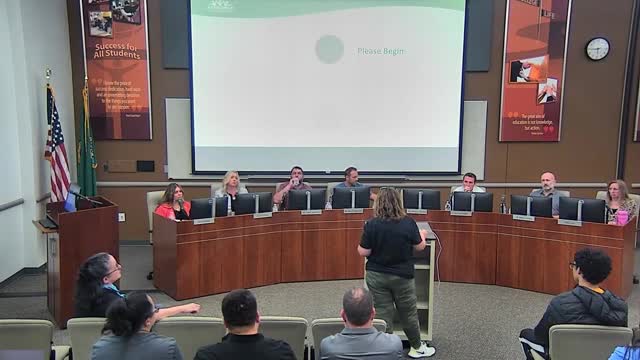Community Schools Face Uncertain Future Amid Rising Absenteeism
September 15, 2024 | Kennewick School District, School Districts, Washington
This article was created by AI summarizing key points discussed. AI makes mistakes, so for full details and context, please refer to the video of the full meeting. Please report any errors so we can fix them. Report an error »

During a recent government meeting, community leaders and educators voiced strong support for the Communities in Schools (CIS) program, emphasizing its critical role in addressing the needs of at-risk students in the Kennewick School District. The discussions highlighted the significant rise in challenges faced by families over the past three decades, particularly in the wake of the COVID-19 pandemic, which has exacerbated issues like chronic absenteeism.
Speakers underscored the importance of maintaining partnerships with CIS, arguing that the program provides essential resources and support that allow schools to focus on educational outcomes. One speaker noted that the district has seen a staggering 16,000 students—approximately one-third of the student population—classified as chronically absent, a figure that surpasses both state and national averages. The reasons for this absenteeism are varied, including transportation issues, mental health challenges, and family responsibilities.
Christine Brown, a former board member of CIS, articulated the program's value, stating that it places trained adults within schools to foster relationships with students, which can lead to improved attendance and academic performance. She outlined seven key reasons for continuing the partnership with CIS, including its established track record in fundraising, data-driven approach, and ability to leverage community resources.
Kathy Clayton, a retired elementary principal and founding board member of CIS in Benton Franklin, echoed these sentiments, sharing her firsthand experience of how CIS has expanded its services from two to eleven schools in Kennewick over the past nine years. She emphasized that the program has significantly enhanced support for students and families, filling gaps that overwhelmed school staff could not address alone.
The meeting concluded with a call to action for the school board to reconsider any decisions that might jeopardize the CIS partnership, as community leaders believe it is vital for supporting the most vulnerable populations in the district.
Speakers underscored the importance of maintaining partnerships with CIS, arguing that the program provides essential resources and support that allow schools to focus on educational outcomes. One speaker noted that the district has seen a staggering 16,000 students—approximately one-third of the student population—classified as chronically absent, a figure that surpasses both state and national averages. The reasons for this absenteeism are varied, including transportation issues, mental health challenges, and family responsibilities.
Christine Brown, a former board member of CIS, articulated the program's value, stating that it places trained adults within schools to foster relationships with students, which can lead to improved attendance and academic performance. She outlined seven key reasons for continuing the partnership with CIS, including its established track record in fundraising, data-driven approach, and ability to leverage community resources.
Kathy Clayton, a retired elementary principal and founding board member of CIS in Benton Franklin, echoed these sentiments, sharing her firsthand experience of how CIS has expanded its services from two to eleven schools in Kennewick over the past nine years. She emphasized that the program has significantly enhanced support for students and families, filling gaps that overwhelmed school staff could not address alone.
The meeting concluded with a call to action for the school board to reconsider any decisions that might jeopardize the CIS partnership, as community leaders believe it is vital for supporting the most vulnerable populations in the district.
View full meeting
This article is based on a recent meeting—watch the full video and explore the complete transcript for deeper insights into the discussion.
View full meeting
